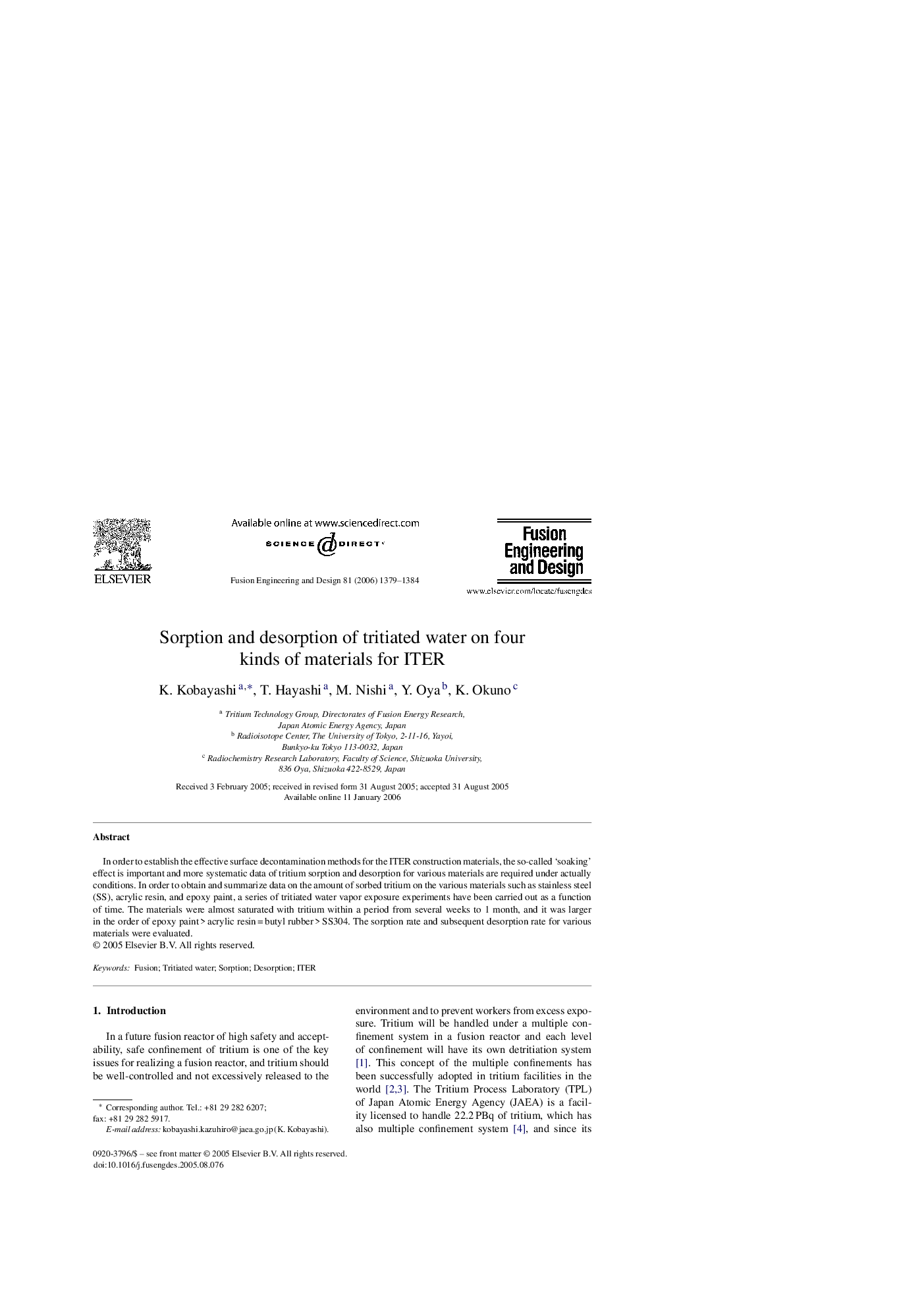| Article ID | Journal | Published Year | Pages | File Type |
|---|---|---|---|---|
| 273888 | Fusion Engineering and Design | 2006 | 6 Pages |
In order to establish the effective surface decontamination methods for the ITER construction materials, the so-called ‘soaking’ effect is important and more systematic data of tritium sorption and desorption for various materials are required under actually conditions. In order to obtain and summarize data on the amount of sorbed tritium on the various materials such as stainless steel (SS), acrylic resin, and epoxy paint, a series of tritiated water vapor exposure experiments have been carried out as a function of time. The materials were almost saturated with tritium within a period from several weeks to 1 month, and it was larger in the order of epoxy paint > acrylic resin = butyl rubber > SS304. The sorption rate and subsequent desorption rate for various materials were evaluated.
